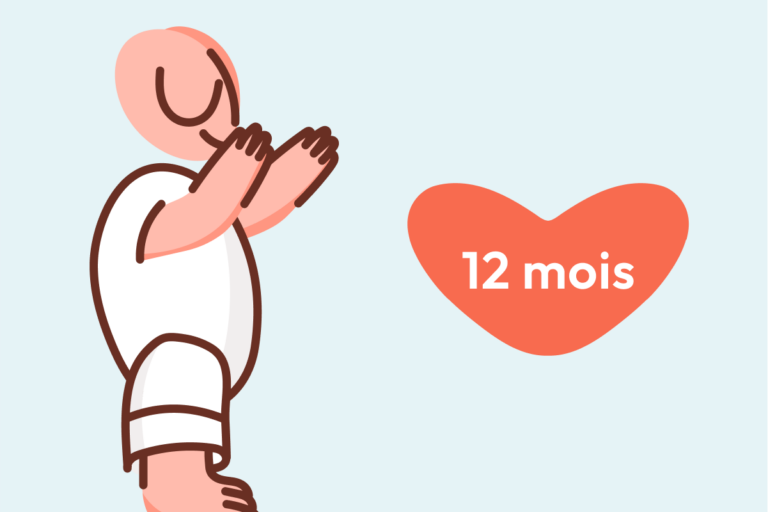Sleep—elusive, deeply desired, yet sometimes as fragile as a thin thread for parents managing the emotional tides of childhood evenings. How can a parent establish calm when a young one’s energy refuses to wane, or curiosity lingers long after sunset? Enter the lullaby, that gentle, melodic companion passed from generation to generation, carrying not only the promise of rest but an entire world of emotional reassurance between its notes. The lullaby, shaped by ancient customs and modern science alike, often leaves parents wondering: Does the melody alone matter, or does the voice, the intention, the rhythm, play an equally powerful role? Expect a journey where medical evidence, cultural legacies, and parent-child connections converge—sometimes in a whisper, sometimes in a song answering the most universal of childhood needs.
Understanding the Lullaby: Origins and Universality
The word lullaby itself evokes comfort, security, and closeness—a term etched into language from the roots “lull” (to soothe) and “by” (closeness). Stretching across boundaries, the lullaby is found, in countless forms, throughout the world. It may be a mother’s whispered verse at dusk, a grandmother’s rhythmic chant, or a father’s soft humming after a long day—the essence remains the same: soothing music, imbued with intimacy.
Historically, lullabies are among the oldest types of songs known to humanity. Ancient civilizations left behind fragments—textual remnants, poetic prayers, sung charms—testimony to the enduring need to comfort children as dusk shadowed village alleys and forest edges. In medieval times, lullabies loomed large in religious and social life. Through the Renaissance and modern history, lullabies evolved: Brahms’s “Wiegenlied”, folk tunes echoed in village centres, or simple melodies whispered under thatched roofs.
But why such universality? Science steps in to clarify this compelling question. The combination of gentle rhythm and repetitive melody regulates infant heart rate, softens breathing, even improves oxygenation—measured and reproduced in paediatric and neonatal clinical settings. In emotional terms, the act of singing a lullaby reduces the child’s arousal state (think: the difference between winding up a music box and letting it unwind in calm), paving the way for emotional security to settle in.
Families transmit values through these songs—stories, warnings, hopes—all woven with meaning. Yet, underneath, the biological need remains: to nurture, to soothe, to restore equilibrium, preparing the young body (and mind) for rest.
Diverse Melodies, Shared Intent: Lullabies Around the World
Picture a Brazilian caregiver murmuring “Dorme neném”, a soft Irish cradle song filling a rain-washed kitchen, or a cradle song echoing through a Himalayan village—each unique, each holding the same intent. Cultural variety flourishes: lullaby lyrics might reference celestial bodies, protective animal spirits, or daily struggles, sometimes serving as both comfort and subtle lament.
In some cultures, lullabies also gave voice to parental anxieties or difficult realities (wars, social pressures), disguised beneath soothing syllables. These songs are not always “happy”. Grief, longing, even warnings sometimes sneak in, reflecting the complexity of parenthood—and of life itself.
Yet, the underlying design persists: a simple, memorable tune, predictable repetition, the beating of a metaphorical heart embedded in 6/8 time. Babies worldwide don’t demand complex orchestrations; instead, they respond best to the melodic intonation and natural timbre of the caregiver’s own voice—a profound reminder that the most advanced “technology” remains unchanged through centuries: human connection.
The Unique Physiology of Comfort: Why Lullabies Work
What makes a lullaby work, not just as tradition but as a scientifically supported sleep aid? Peek beneath the poetic surface, and you find a remarkable array of physiological responses. When a parent begins singing, the child’s nervous system reacts almost instantly. Heart rate decelerates, breathing synchronises with the melody’s tempo, and, measured by EEG, brainwave patterns naturally shift toward those seen during sleep initiation.
Medical studies confirm this: the soothing song not only helps initiate sleep but can bolster feeding and digestion (especially vital for preterm infants), improve neurodevelopmental outcomes, and foster steady emotional regulation as the child matures. Neonatal intensive care units sometimes employ therapeutic music for these precise reasons.
Cognitive growth is another benefit. The structure and rhythm of lullabies facilitate early language development. When words are softly repeated, neural circuits for speech, comprehension, and emotional expression fire up—laying groundwork for future communication and resilience.
Emotional Anchors and Parent-Child Closeness
The value of a lullaby often transcends the physiological. Singing to a child, especially live (not via a device), initiates a feedback loop of trust and recognition. The familiar parental voice, already imprinted from the womb, becomes a reliable “anchor” during times of transition—bedtime, changes, distress.
This is not about perfect pitch. Parent voices, with all their unique quirks, changes in volume, or quiet pauses, provide the authenticity that builds attachment and long-term emotional stability. Therein lies a practical tip: don’t fret about musical expertise or compare yourself to professional singers. The emotional intent communicated in each note matters most.
Ritualised bedtime routines benefit from the inclusion of a lullaby: the predictability signals the child’s body to prepare for sleep, reducing cortisol (the “stress hormone”), and increasing the sense of security.
Creating and Personalising Your Lullaby Ritual
Intimidated by the idea of “inventing” a lullaby for your child? Breathe easy. Whether adapting a time-honoured melody or improvising verses about daily moments, authenticity counts more than musical prowess. Consider these practical tips for building your bedtime tradition:
- Go simple: Use repetitive words, familiar to your child.
- Include culturally resonant sounds or references (animals, nature, family).
- Experiment with vocal tone: a slow tempo, gentle modulation, and natural pauses mirror heartbeat rhythms.
- Personalise: Insert your child’s name, mention their favourite toy, or craft mini-stories.
- Combine with touch: Gentle rocking, hand-holding, or a soft pat enhances the sensory connection.
Personalising the lullaby nourishes not just sleep, but also family identity and emotional memory—every repetition deepening the bond.
Lullaby and Modern Technology: Asset or Distraction?
With musical apps, mobile toys, and programmable beds flooding the market, should parents stay “old-fashioned” or adopt these innovations? It’s a valid dilemma. While certain devices may provide convenience for frazzled evenings, research repeatedly demonstrates the deeper effectiveness of the live parental voice.
Digital versions can supplement—especially for busy parents—but shouldn’t supplant the human touch. Moreover, not all “soothing music” is truly relaxing. Some upbeat or complex pieces risk stimulating rather than calming a sensitive child. Look for options that maintain a slow pace, soft timbre, and gentle emotional hue.
Lullabies Beyond Infancy: Lifelong Comfort
Would a lullaby still make sense for a preschooler, or even for older children? Absolutely. Beyond infancy, familiar songs act as emotional stabilisers—easing transitions, calming frayed nerves, and turning even an ordinary day’s end into an opportunity for shared closeness. From toddlerhood through difficult school phases (think: the jitters before an exam, or the anxiety of a new environment), a lullaby—whether a full song or just a hummed verse—remains a gentle, restorative tool.
Artistic and Societal Legacy of Lullabies
Walk into the corridors of classical music, and you’ll spot the “Berceuse”, “Wiegenlied”, and other musical odes to cradle songs, each a tribute to the enduring emotional power of the lullaby. Literature, cinema, and even modern pop culture have woven these melodies into their very fabric—think of the soft strains in children’s films or the childhood tunes repurposed into chart-topping tracks.
Ritualistic use persists, whether during family gatherings, bedtime, or community ceremonies—each reinforcing bonds not only between parent and child but between generations, enriching both individual and collective well-being.
Key Takeaways
- The lullaby acts as both comfort mechanism and educational tool, supporting calmness, sleep, and early brain development.
- Live singing has evidence-based physiological benefits—lowering stress hormones, synchronising heart and respiratory rhythms, and enhancing secure attachment.
- Personalising your lullaby—with your language, stories, or affectionate anecdotes—deepens the emotional impact.
- Modern technology can aid bedtime, but it’s the warmth and resonance of your own voice that carries the strongest health and developmental benefits.
- Lullabies remain valid and effective through all phases of childhood—not just infancy.
- Cultural and artistic expressions of lullabies underscore their universal importance across history and societies.
- When seeking advice or facing particular worries about your child’s sleep or well-being, consider consulting healthcare professionals and resources dedicated to parental support.
For those looking to go further, discover guidance, advice, and free child health questionnaires via the Heloa app, tailored for families keen to nurture optimal growth and happiness for their little ones.
Questions Parents Ask
Can lullabies help children beyond infancy, such as toddlers or older kids?
Definitely. The soothing comfort of a familiar lullaby doesn’t vanish after the baby stage. Many toddlers and even older children find reassurance in bedtime songs. Especially during moments of change or stress—like starting school or dealing with sleep worries—a lullaby can provide that much-needed sense of stability and peace.
Do you have to be a good singer for lullabies to work?
Not at all. The calming effect comes mainly from your presence and the unique sound of your voice, not from perfect musical notes. Your child finds security in the familiar rhythm, pauses, and warmth—whether you sing softly, hum, or even gently talk the words. Technique is less important than sincerity and connection.
Can lullabies be used to help soothe children during the day, too?
Absolutely. The lullaby isn’t reserved for bedtime alone. Families use gentle tunes throughout the day to ease fussiness, support recovery during illness, or comfort children during stressful events (like car rides or transitions). These moments create micro-connections, helping children gain reassurance and emotional balance whenever needed.









